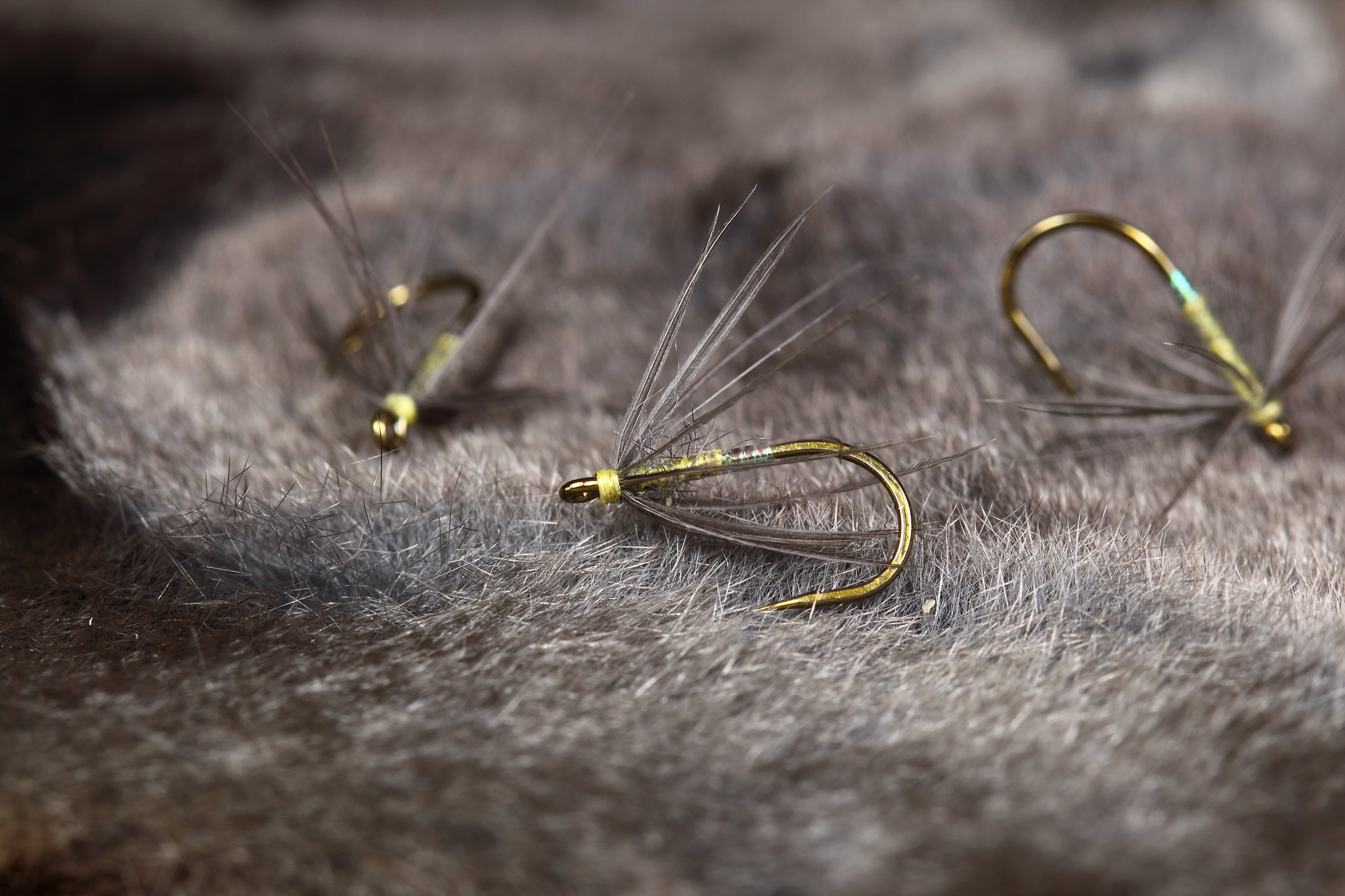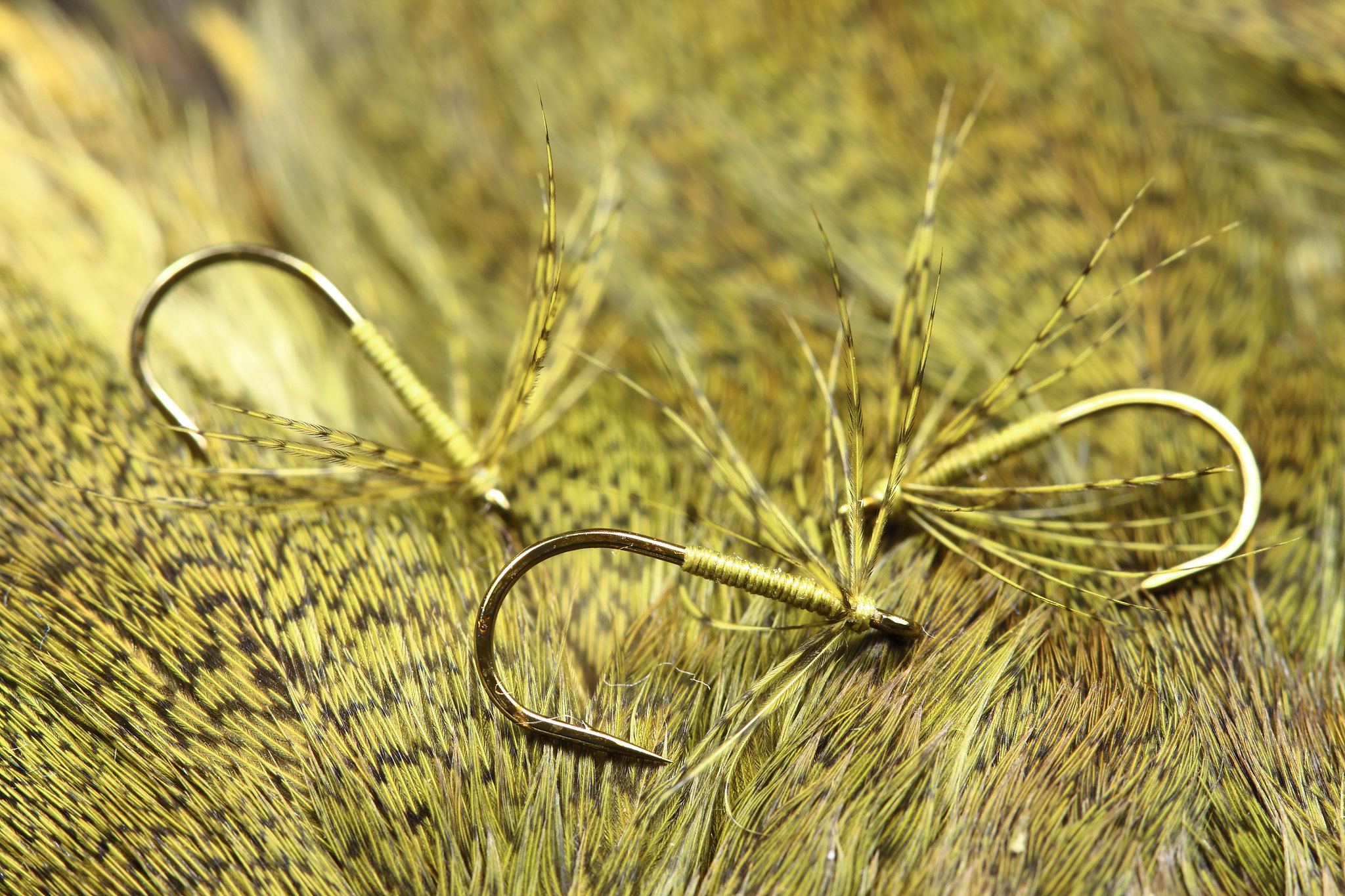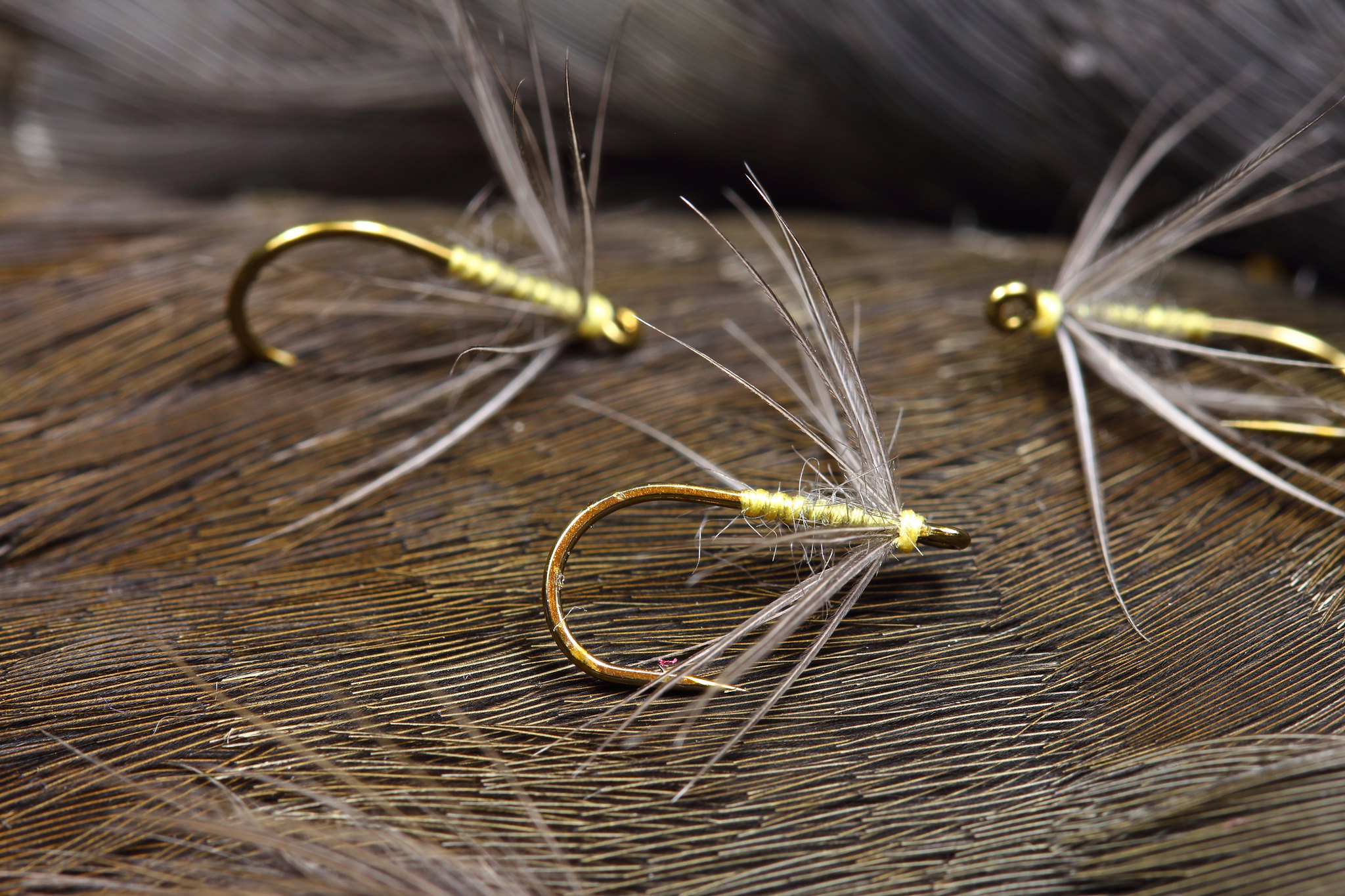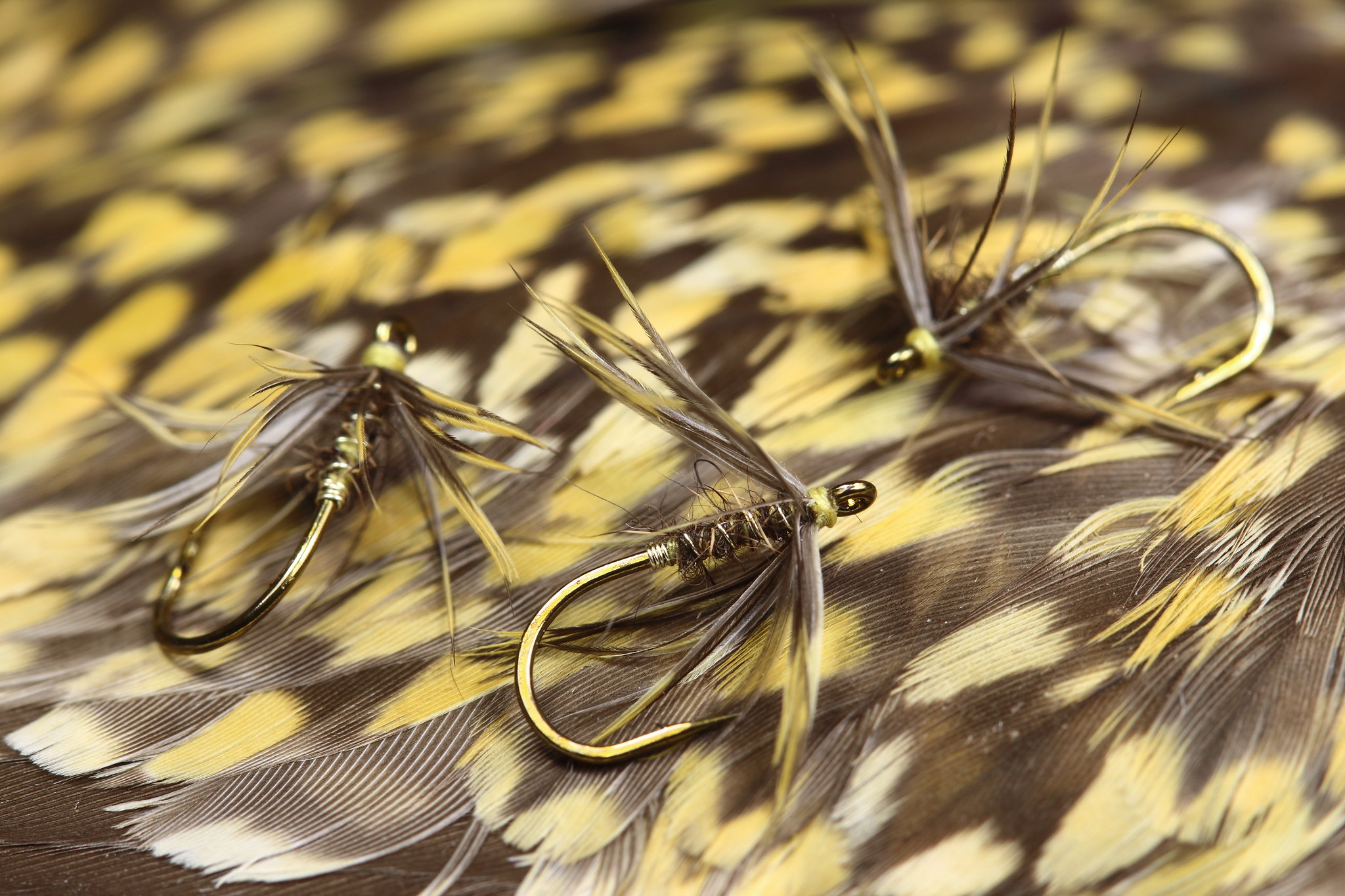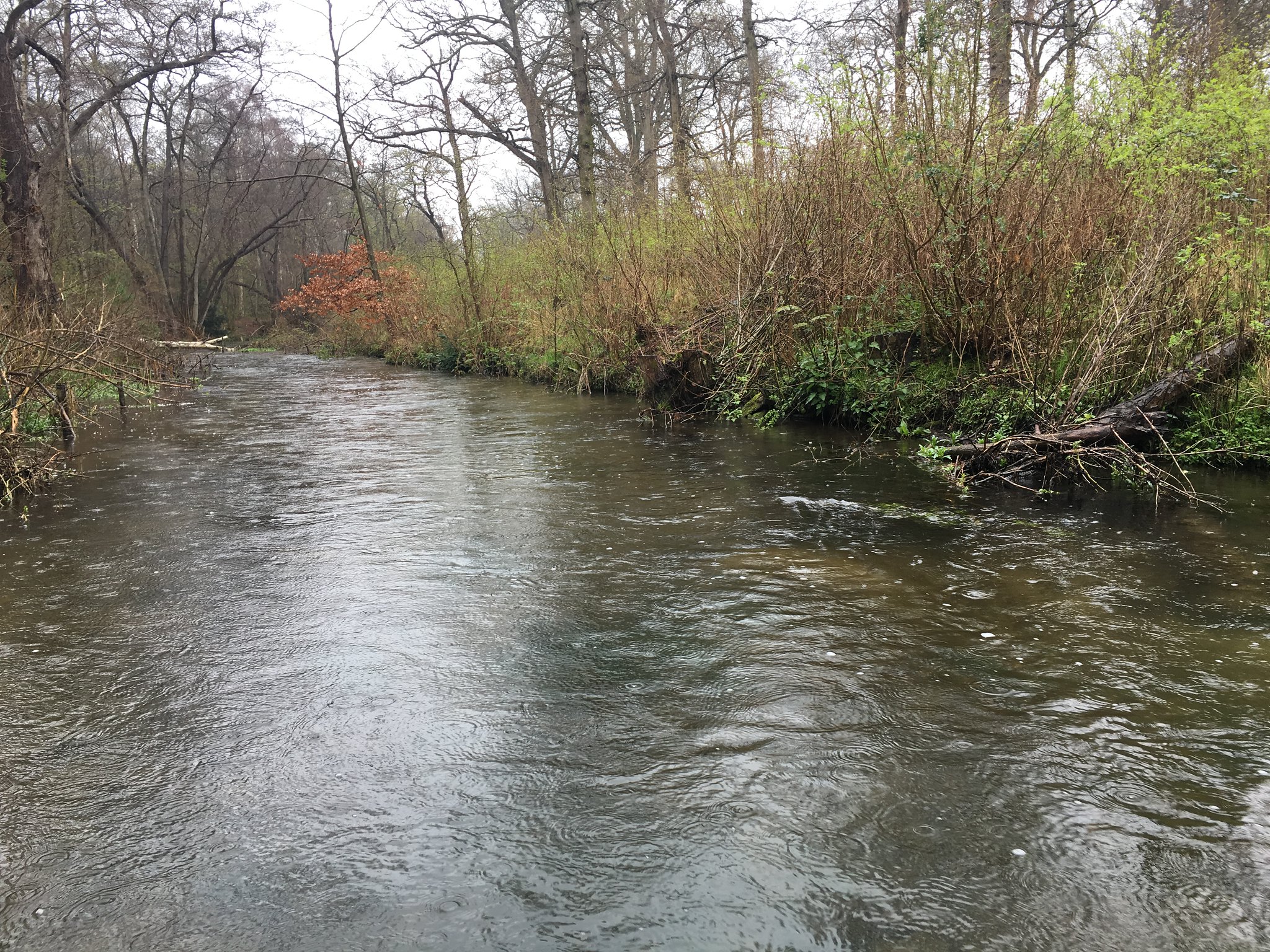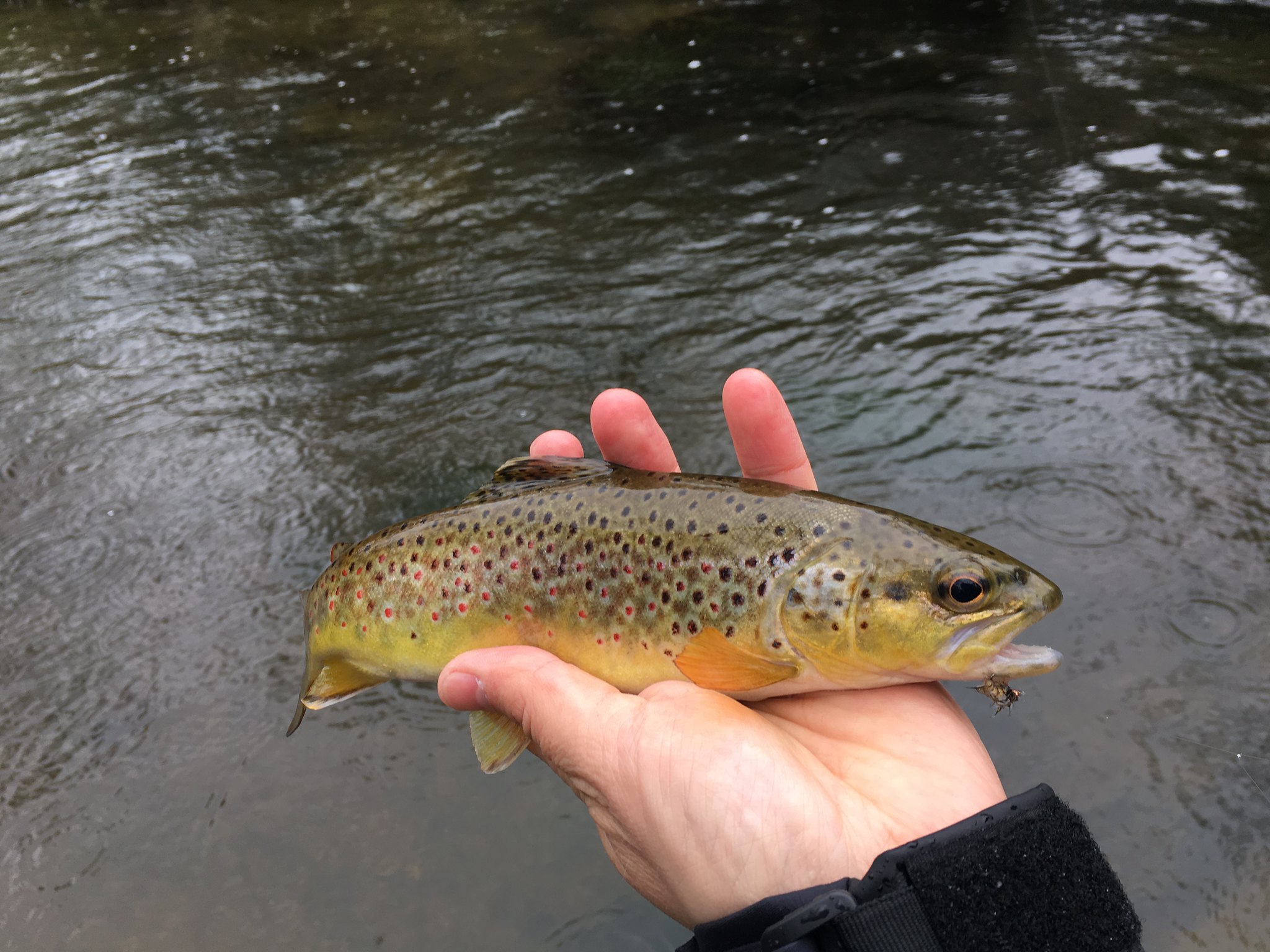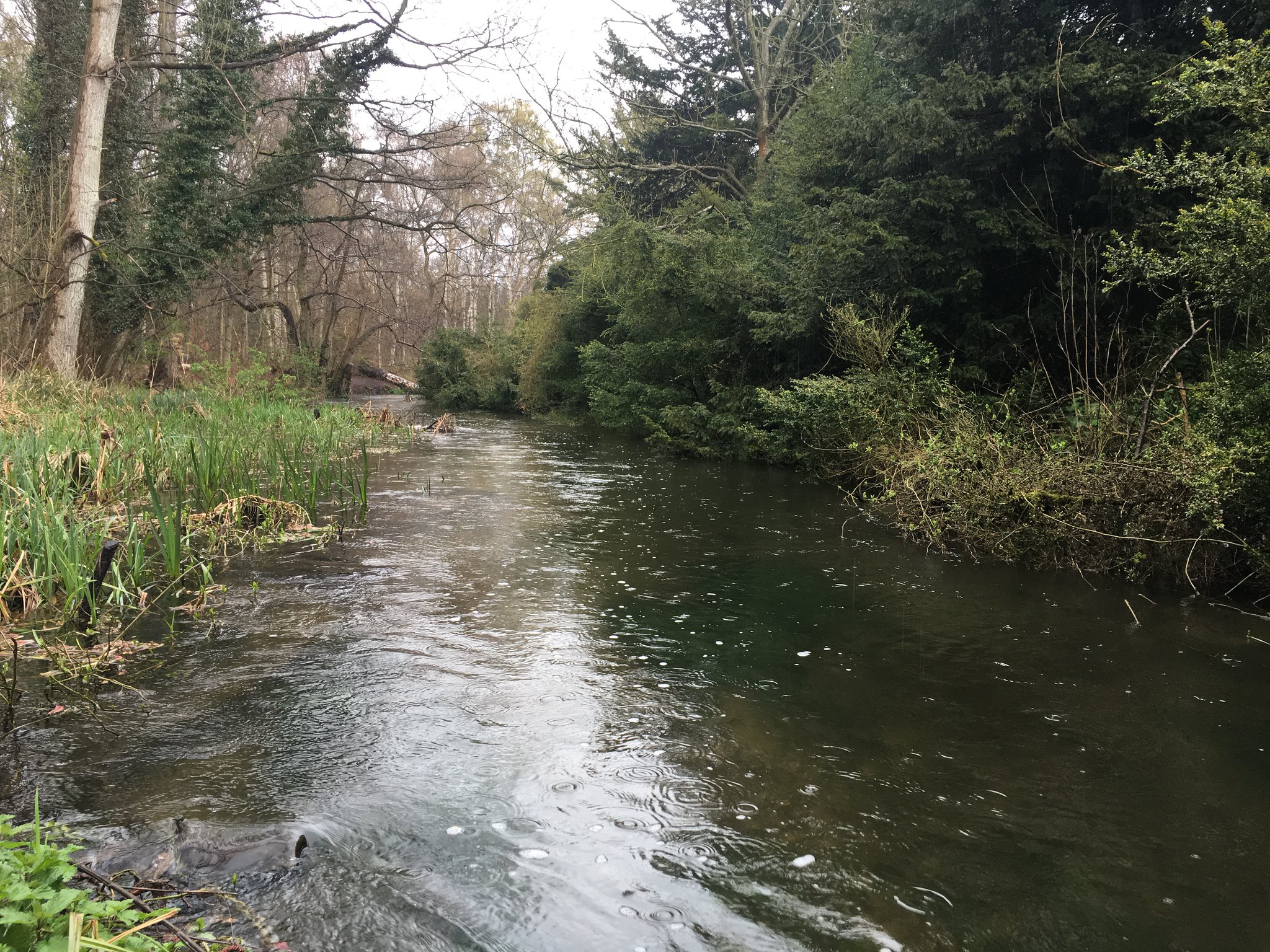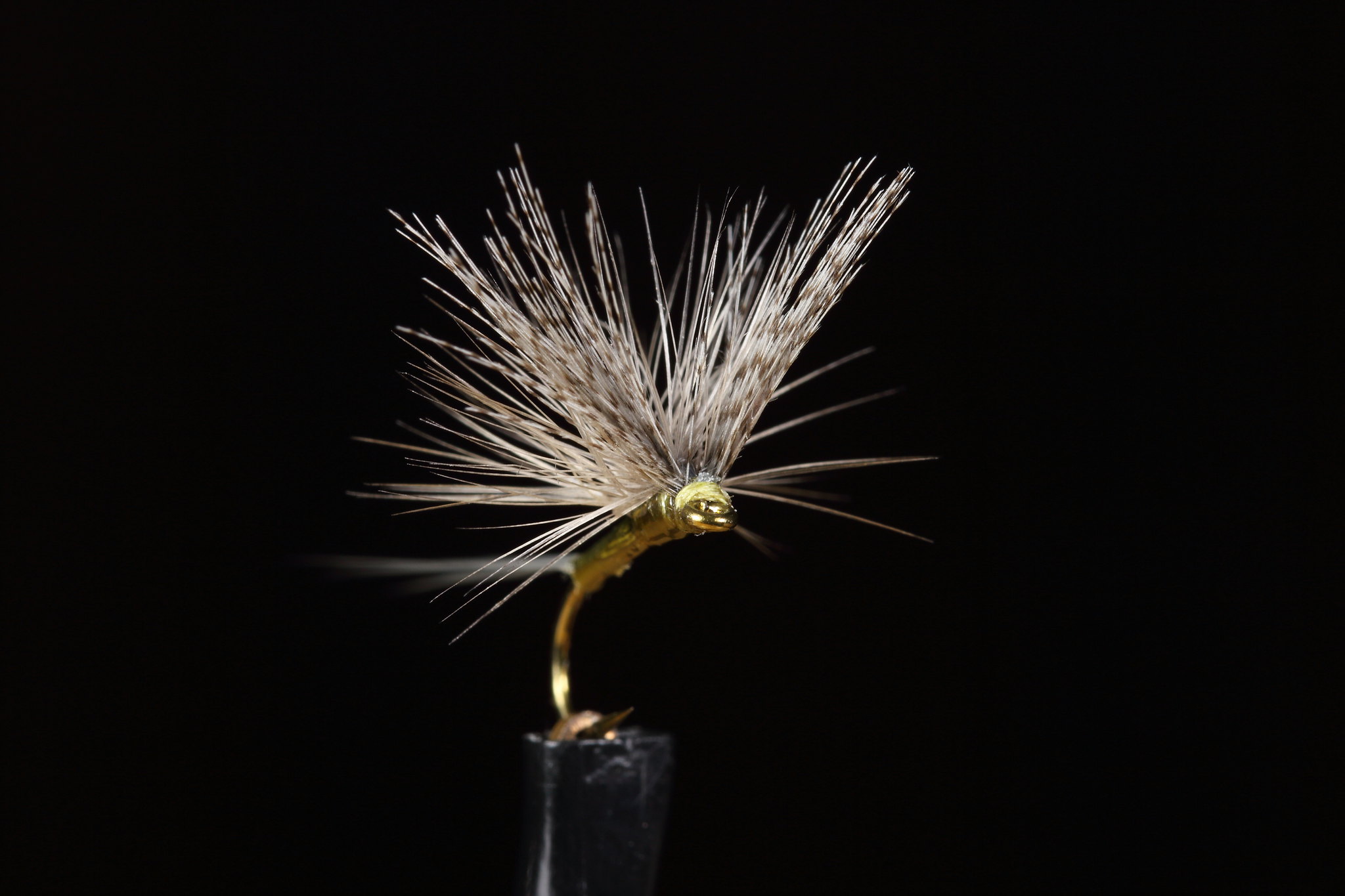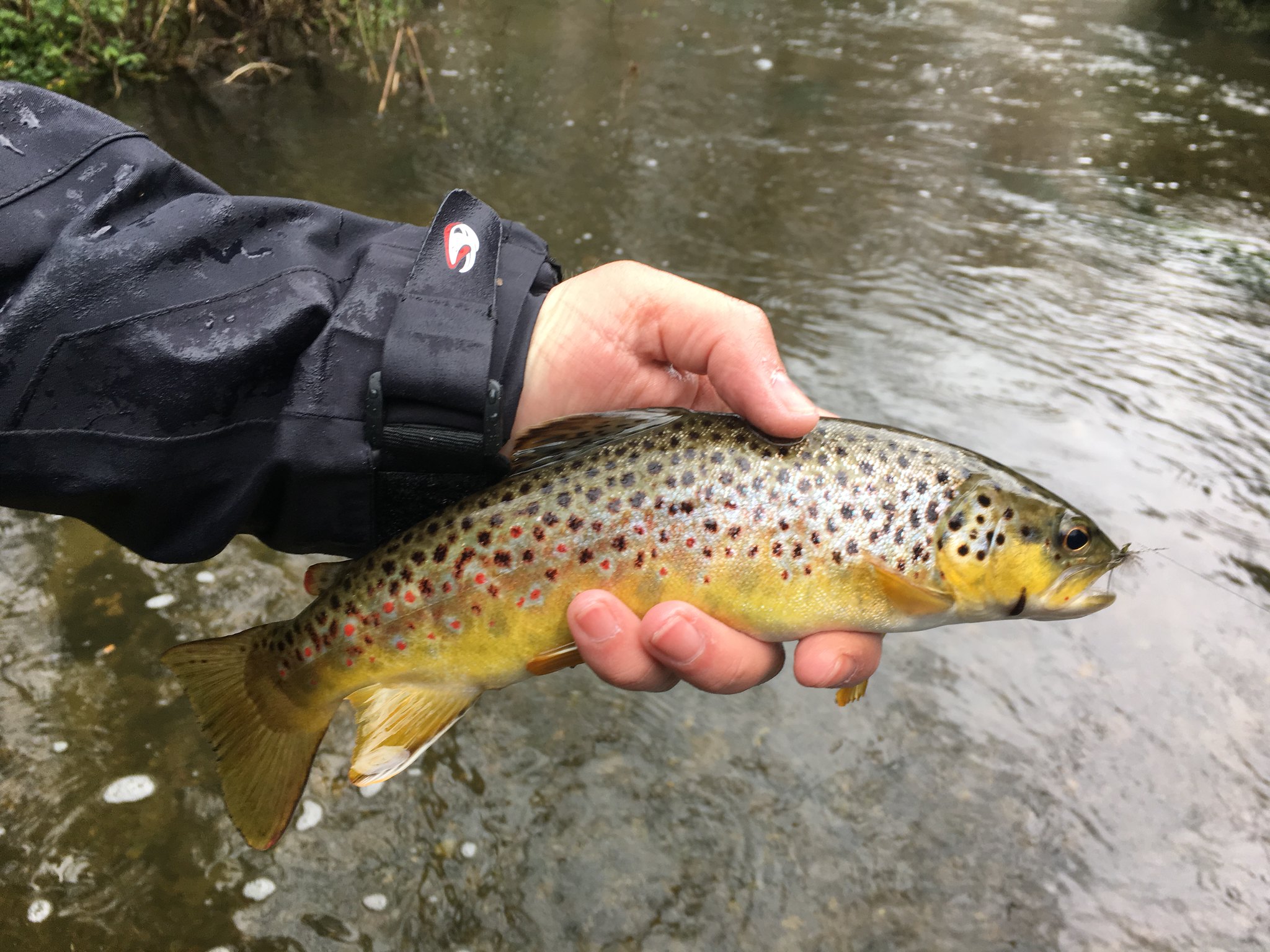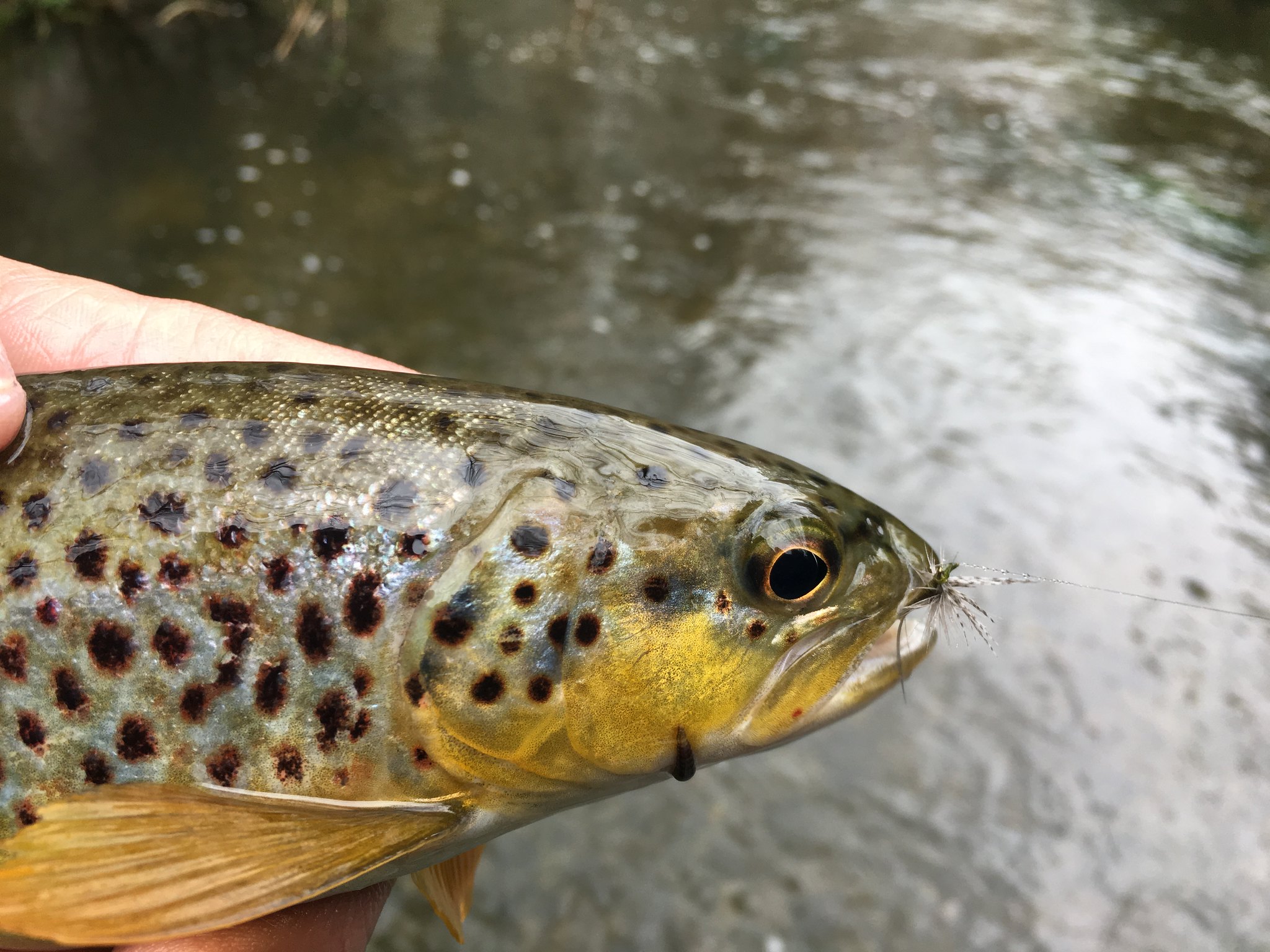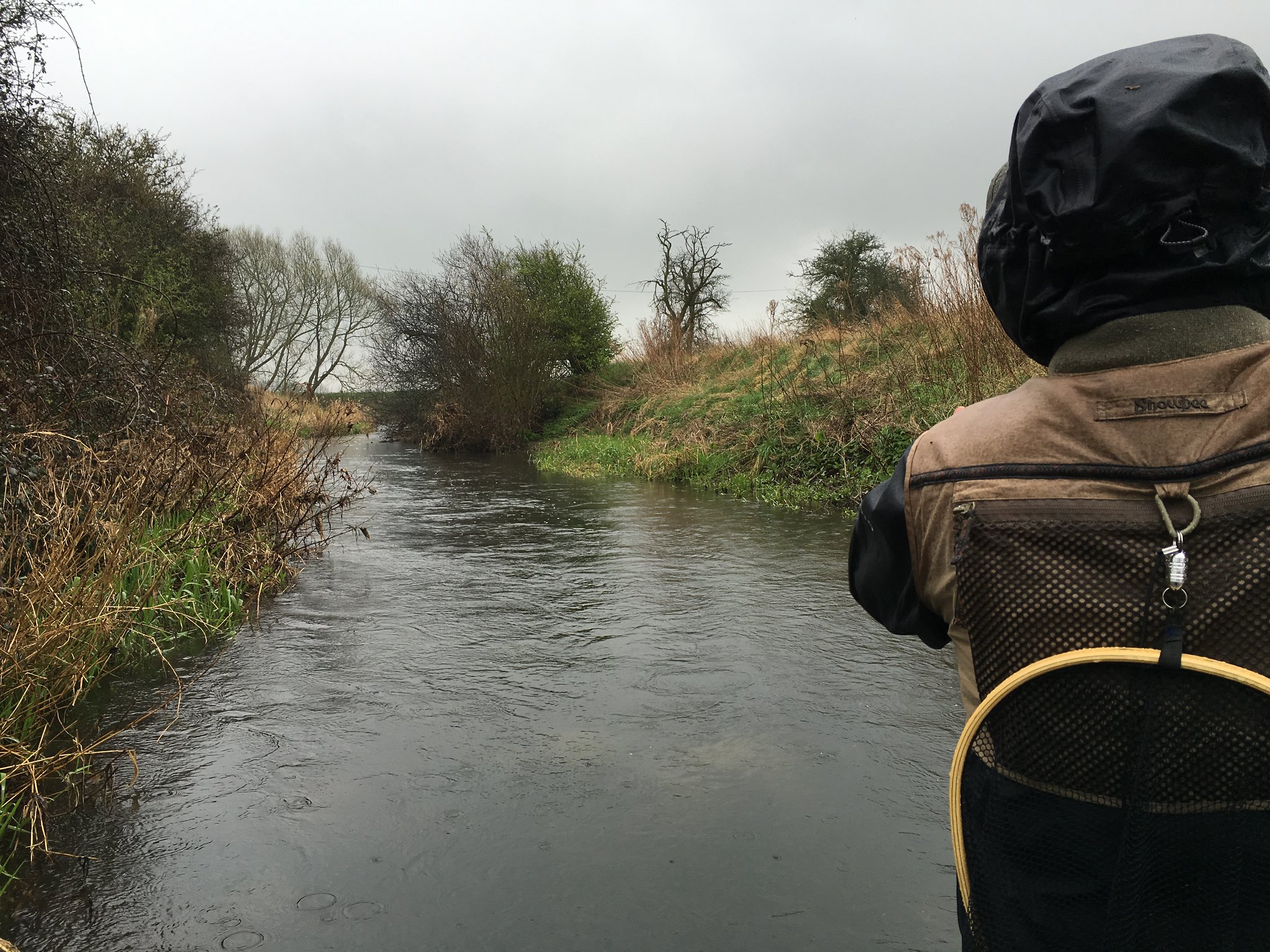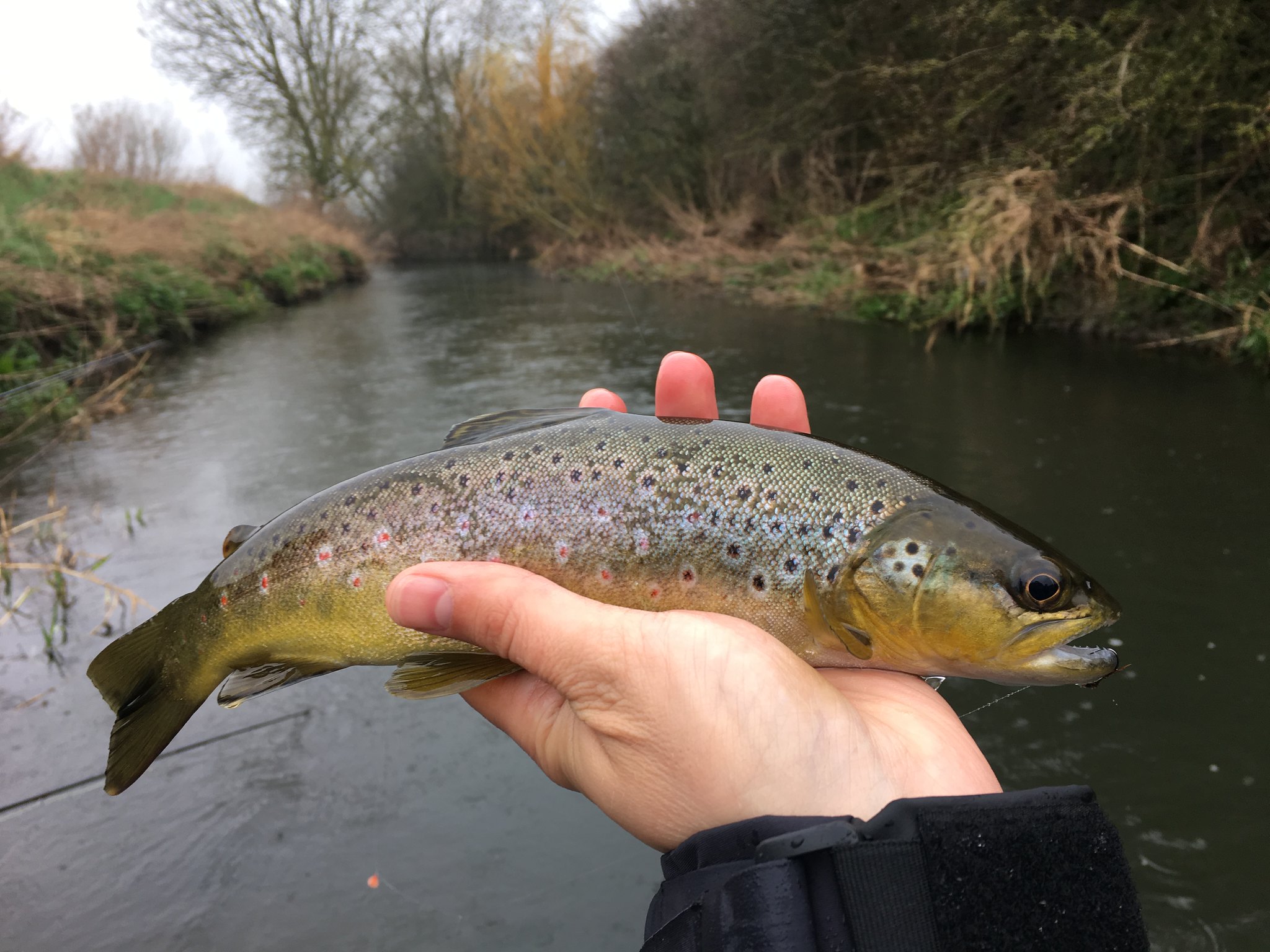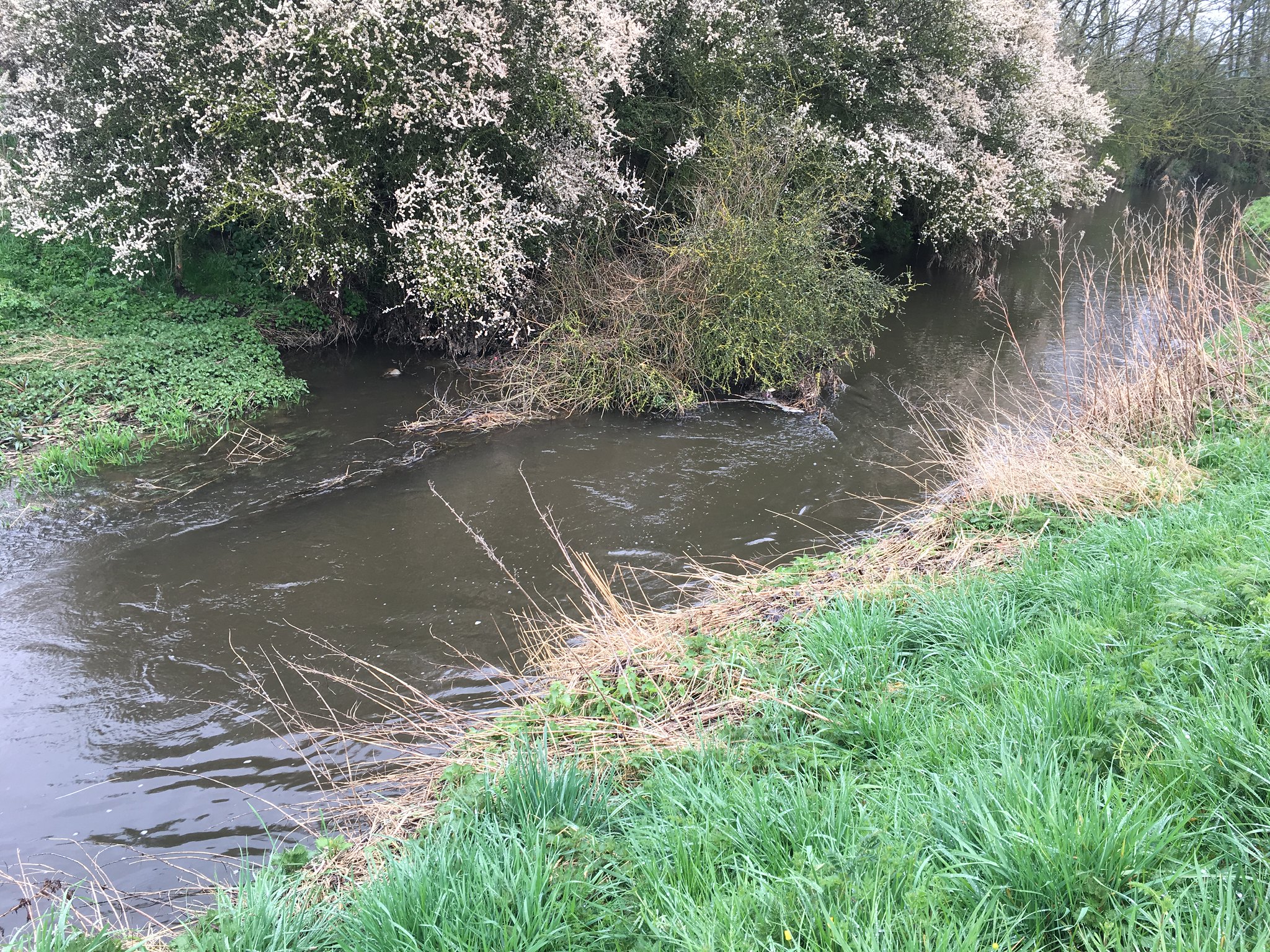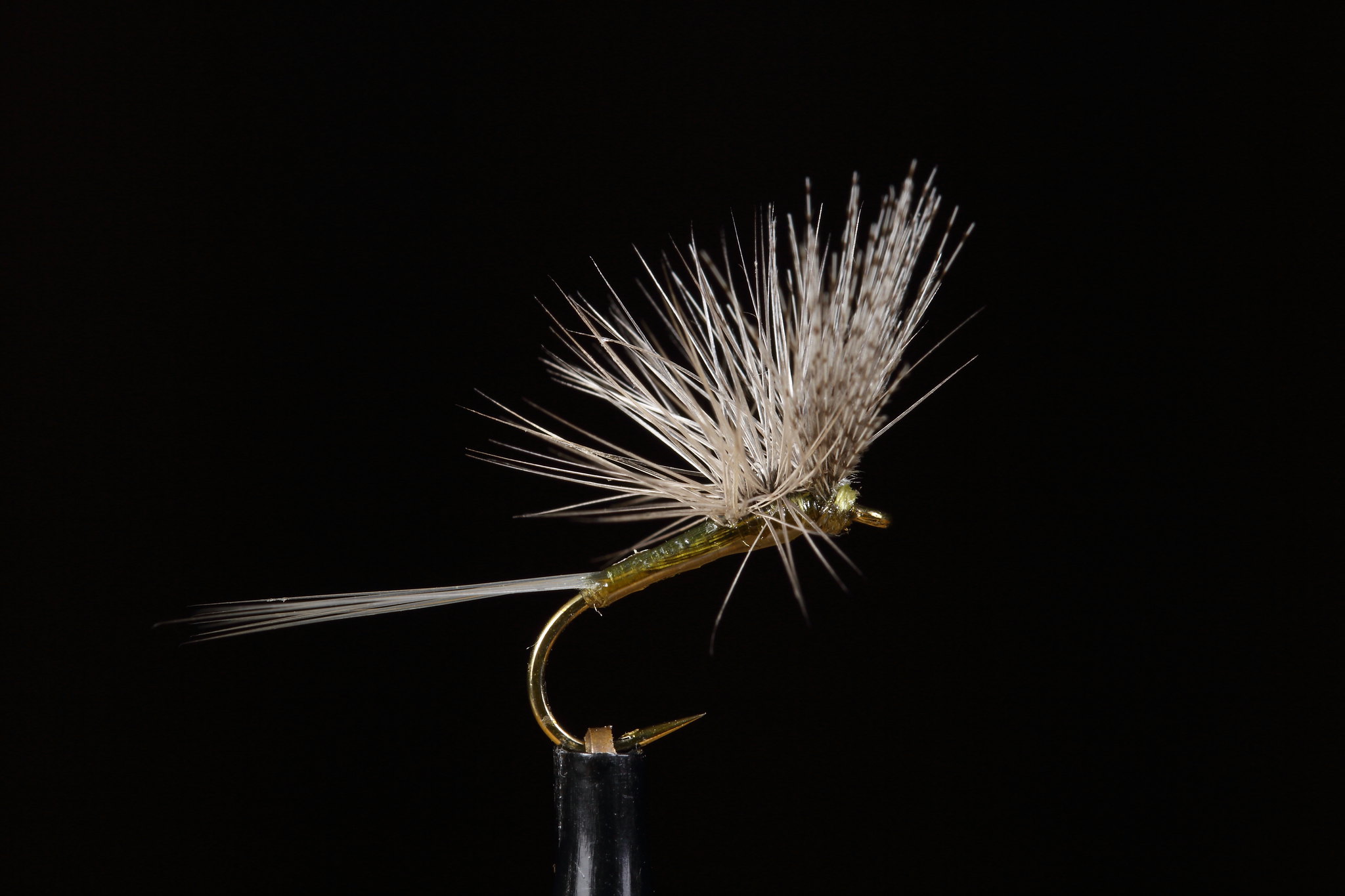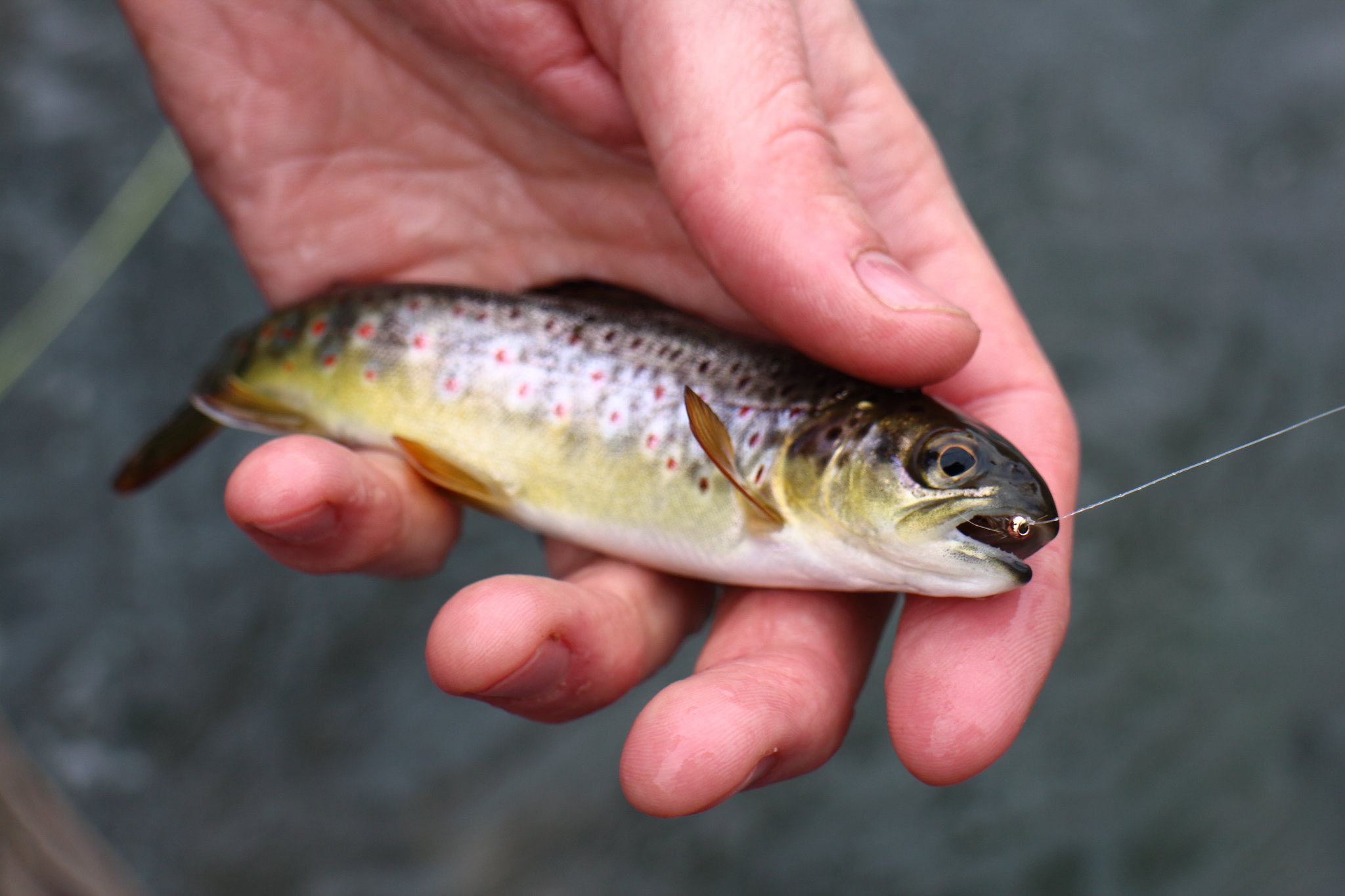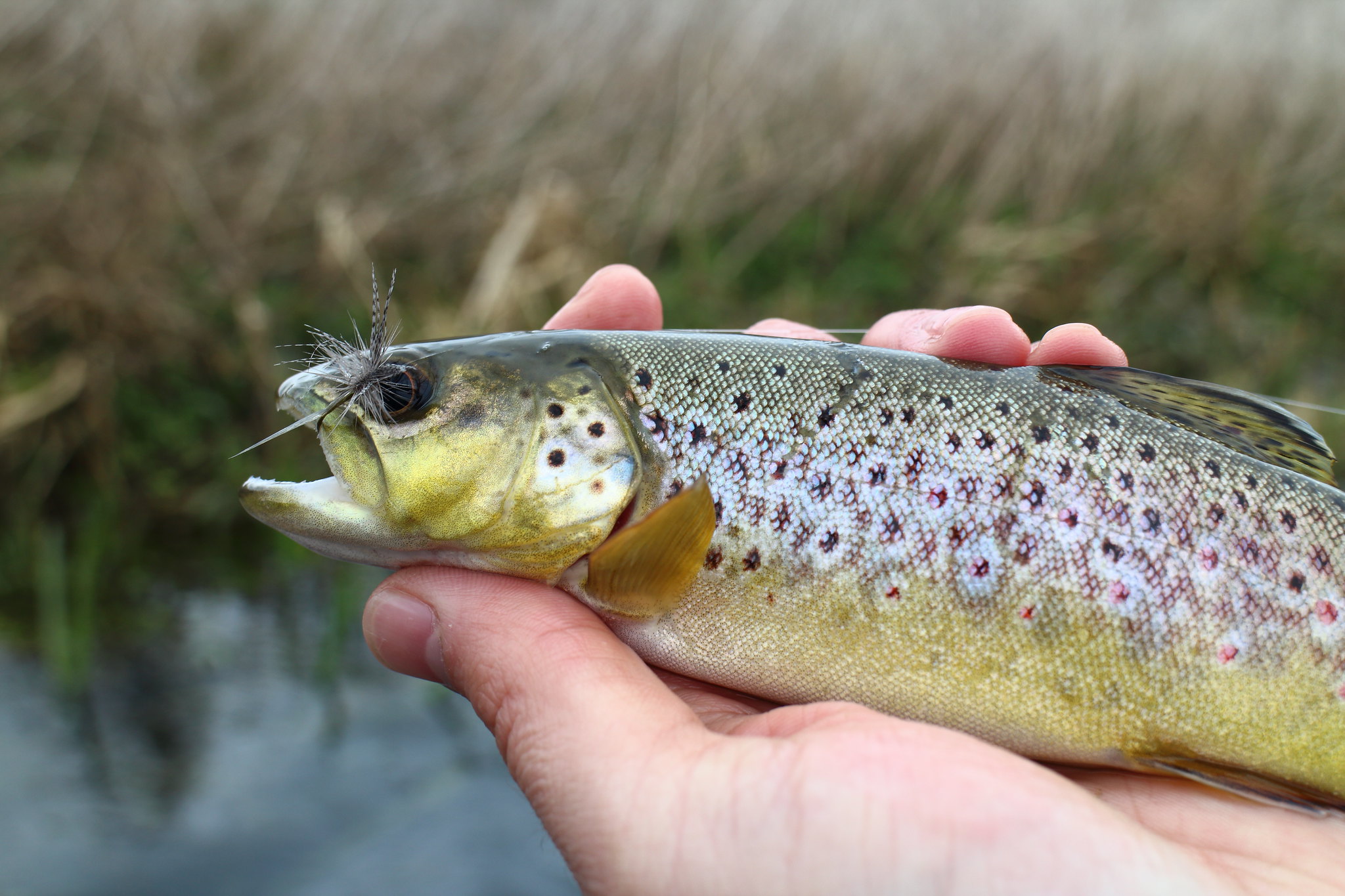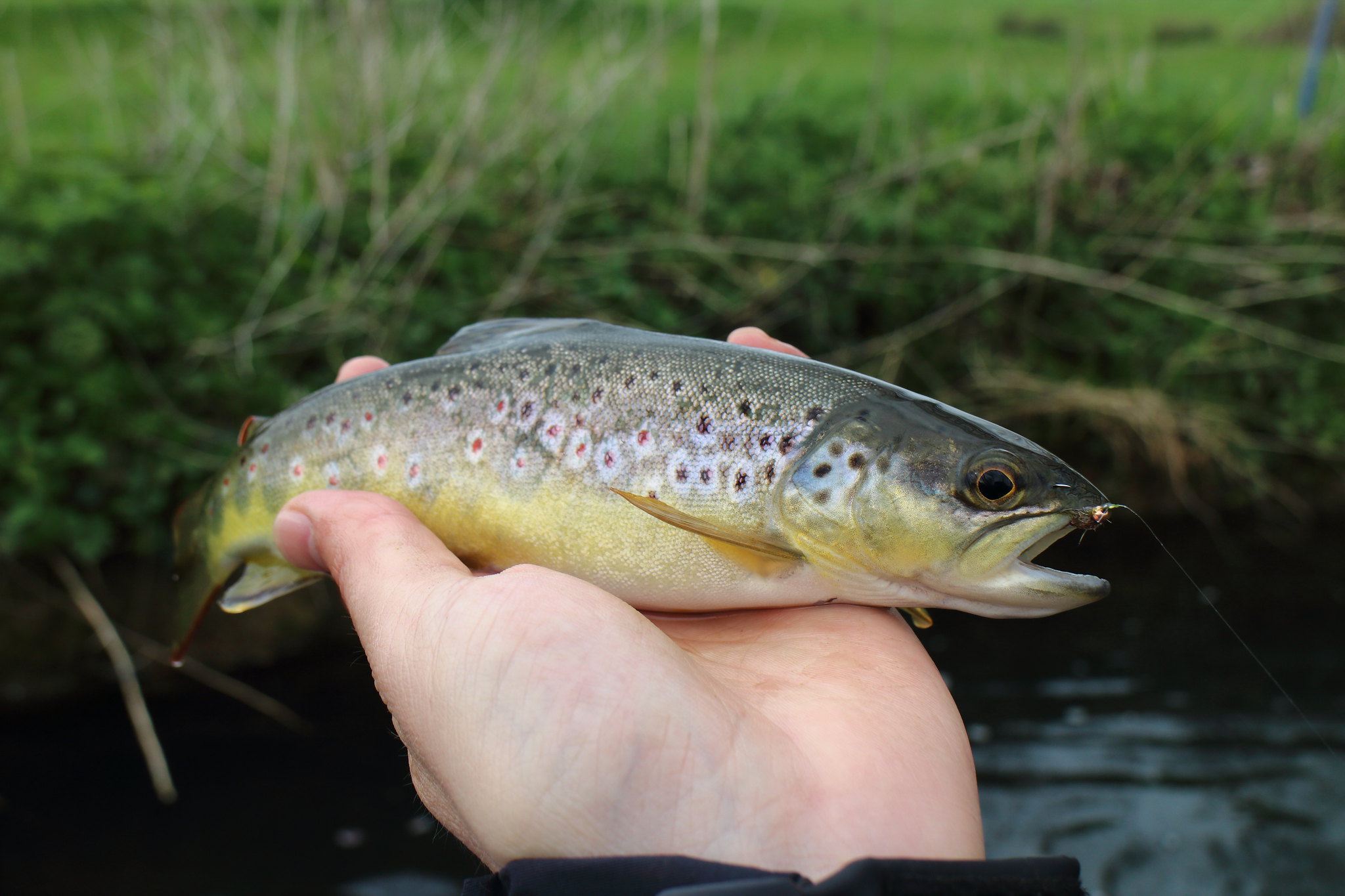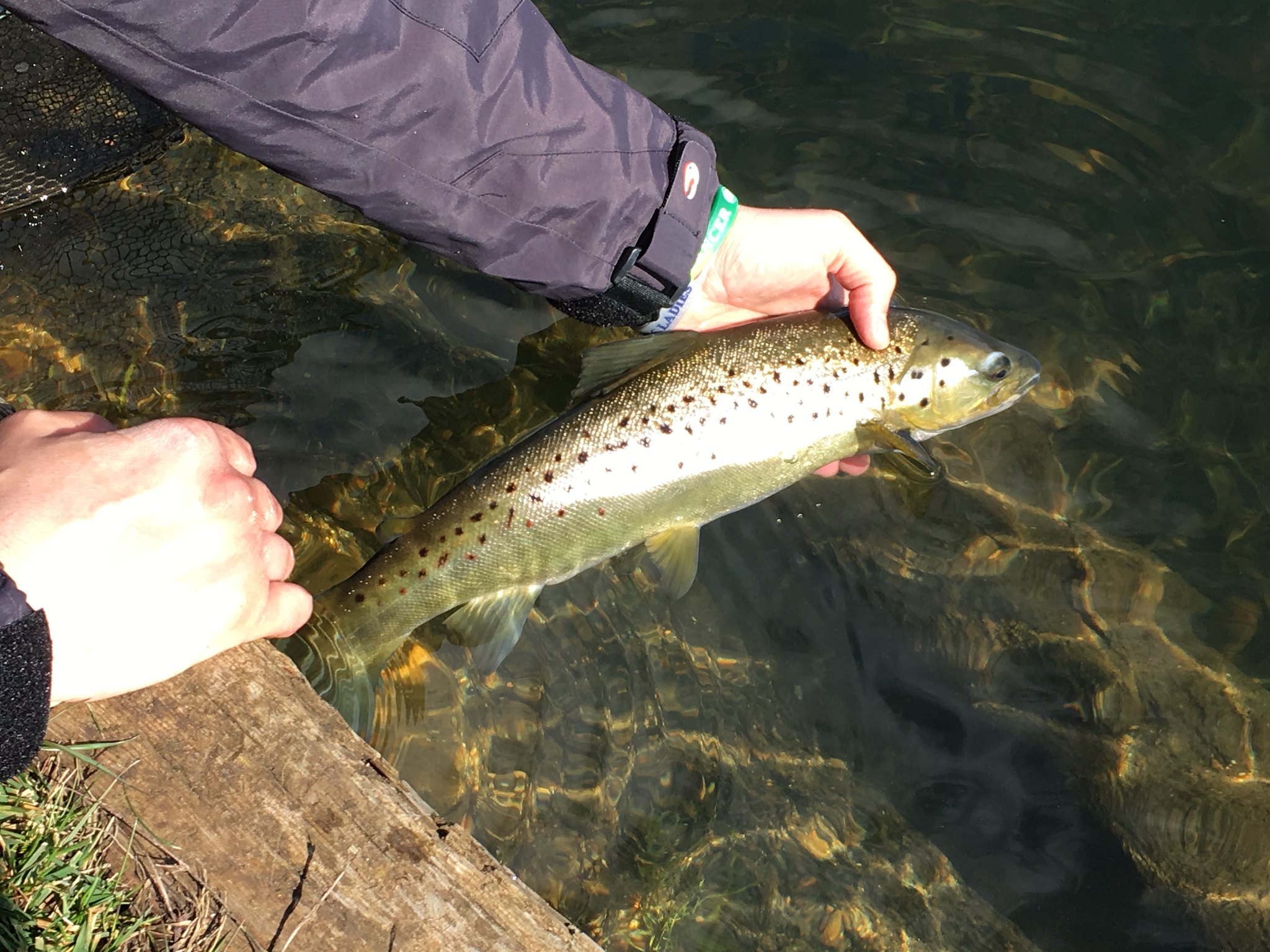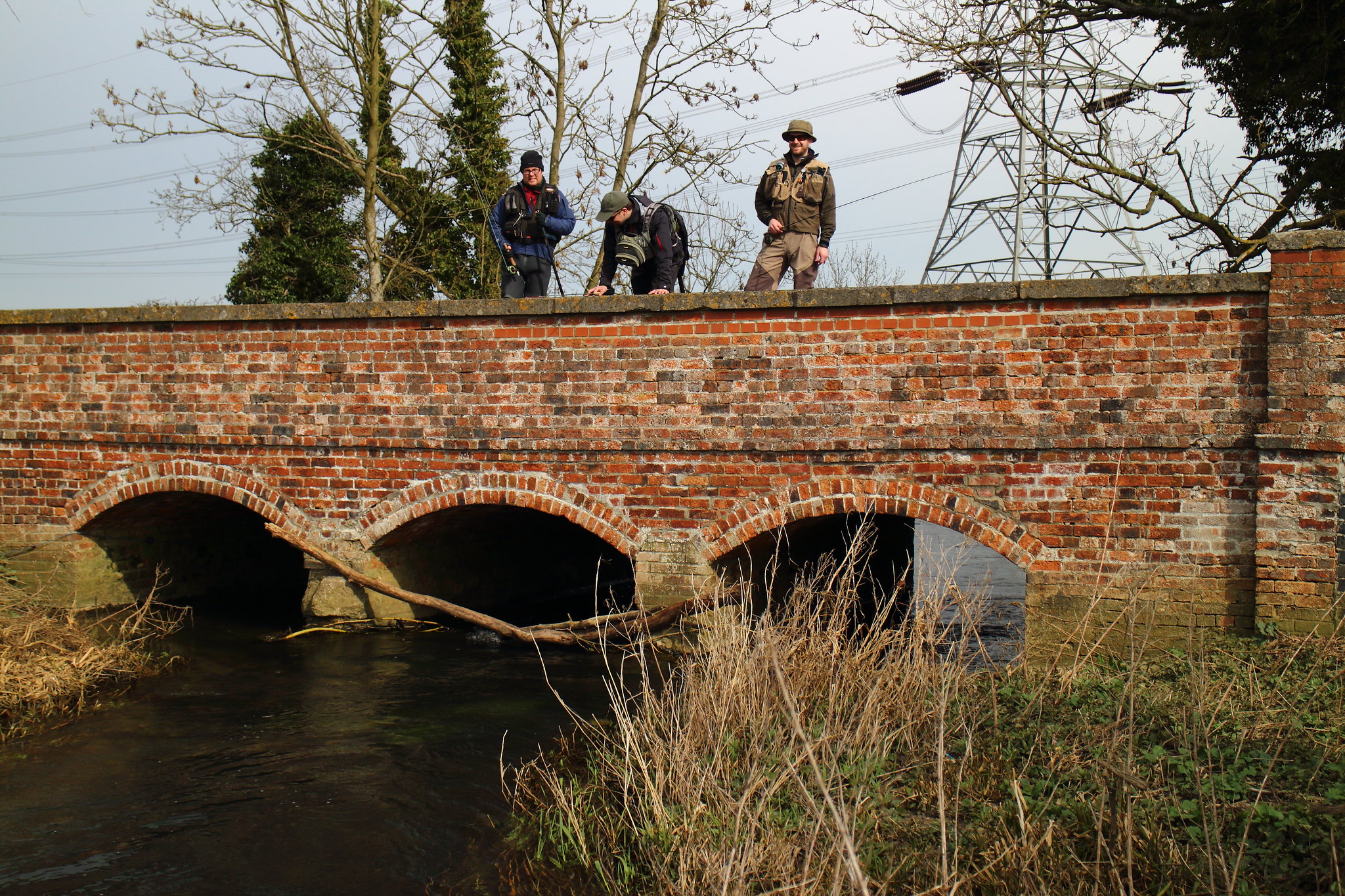 |
| Peering below a bridge, an image every angler recognises |
April fools. I think the joke was on me Friday.
On Thursday as a pre-season appetiser Tom and I went to Earith Lakes fishery for a short morning session. Neither of us hadn't really cast a fly line during the winter using a french style leader mostly, it made for good practice. It also allowed me to have a proper go with the Daiwa NewEra I bought last year; although I have used and caught on it, I really wanted to give it a proper work-out.
Inspired by Dave Southall's writings about success with micro buzzers on small still-waters, I had been busing prepping during the week tying some simple patterns in sizes 20 and 22. Keeping on the simple theme I restricted the colours to black and olive with contrasting wire ribs, red on the black, black wire on the olive; 1.5mm tungsten beads added necessary weight.
Tom arrived before me and had been fishing for fifteen minutes before I arrived, I quickly paid for a four hour ticket and wasted no time in setting up. Tom was fishing an area which was conveniently in front of the car park, but for sound reason, there were quite a number of fish taking emerging buzzers, head and tailing as they patrolled around. With this in mind I set up a two fly leader, a size 22 olive buzzer on the point and a size 16 black magic spider on a dropper around two feet up from the buzzer. 0.16mm tippet was attached to a nine foot tapered leader and I de-greased the whole leader initially.
 |
| The successful micro buzzer that scored well |
Still fishless after a couple of hours things were getting desperate, the fishing were still in front although they had disappeared for a while, perhaps disturbed by our repeated casting. I decided to change some things, despite the small sizes, I felt that they were perhaps sinking too deeply. The leader was promptly greased up to about six inches above the dropper, I also changed the buzzer to a size 20 black version, this one also had a small red holographic tinsel butt. After the second cast I hooked a fish, a scrappy rainbow that was lean and fit, fought strongly giving a good account of itself. Not long after I caught another one, it seemed the code had been cracked, quickly informing Tom of the changes, of course I passed over my fly boxes.
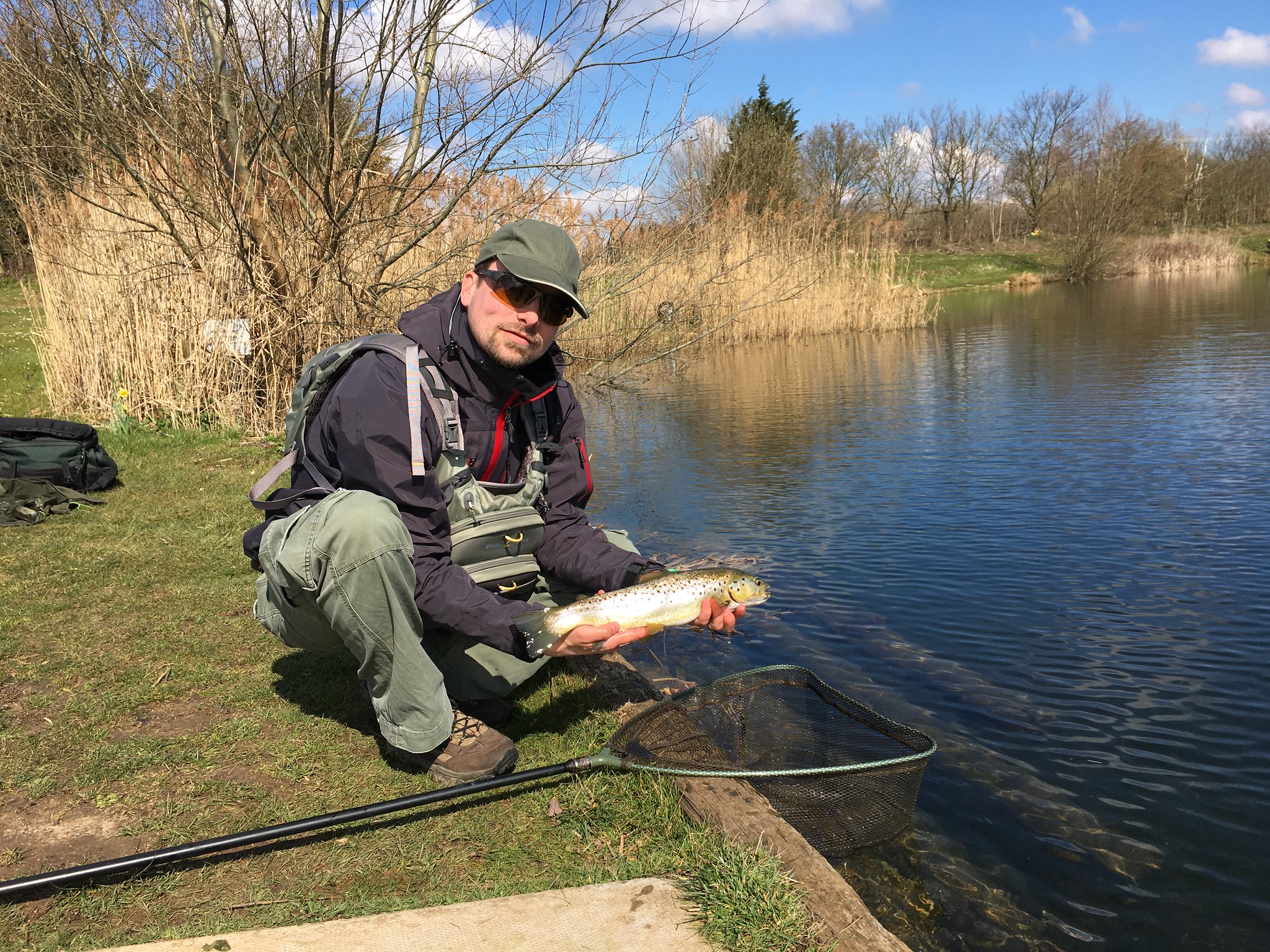 |
| The single brown from Earith, - you don't see many people using chestpacks when fishing still-waters |
In the next couple of hours I caught four rainbows and a brown, all on the same black buzzer and though I think a couple of fish went for the spider I didn't connect with anything. Although Tom fished a practically identical set up to me he couldn't get a take, not a sniff; funny how it works like that.
On Friday Steve, Tom, Eliot and I opened our season fishing the upper sections of our main club river. As always on opening day the expectations were high, the river had dropped back down and cleared after recent rain earlier in the week, there was also hope of a decent hatch of large dark olives. We paired off, Tom and Eliot started just above a road bridge, Steve and I headed further upstream. We were both using eight foot four weight rods, I set up with two nymphs: a copper bead-head PTN on the point and an Oliver Edwards baetis nymph on a dropper about two foot above, Steve fished with the ubiquitous klink and dink.
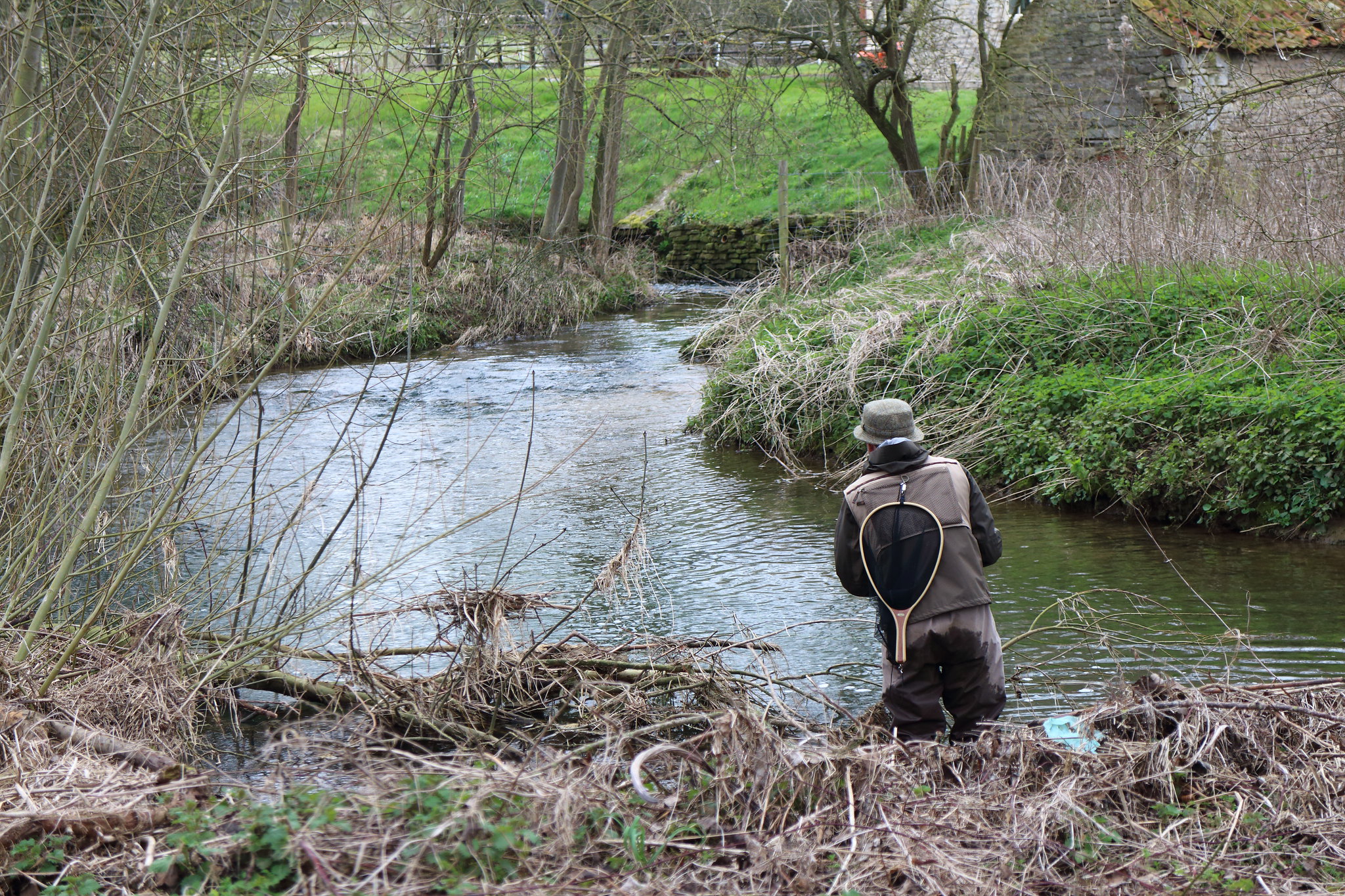
All I can say is I had a mare of a day. A strong wind blew rather predictably downstream, this coupled with plenty of bushes, trees, spent nettle and cow parsley stems conspired to snag and steal flies and tippet material from me. I won't lie, I got mad - really mad - I could have given fishing up, I had to take a breather, refocus and calm myself. Steve's day so far wasn't much better, same issues and after Tom and Eliot had fished their section and walked up to us it became apparent we really had picked the wrong area to start as they had caught a number of fish already. The downstream wind had also troubled them yet the openness allowed them to cast properly compared to our struggle to roll-cast into the wind. After a quick catch up they continued upstream as we set our sights on a couple of promising pools and a short run that flowed hard against an old brick wall. After snagging up and ruining the tippet I changed over to the klink and dink too. Apart from a splashy rise from a small fish to the klink we both continued to struggle.
Wading through a pool we had just fished I spied a trout holding behind a small rock in an otherwise featureless, even bottomed glide. Crouching down I crept up closer towards it, before reaching position the flies were changed to a single fly, a size 16 OE baetis, this I felt would be the best option in the slow steady flow. Tying on the new fly clearly gave the trout time to re-evaluate its position in life as it had disappeared by the time I was ready to fish for it - typical. We had however watched another fish rising frequently a little way further upstream, Steve allowed me to carry on with a change of target. There was nothing visible that I could see on the river surface, to cover many bases the nymph was taken off and replaced with a size 18 Adams paraloop emerger. Not a bad decision as it was taken after half a dozen casts. At last a fish! A short spirited scrap and the blank entry on the catch return card but a distant memory.
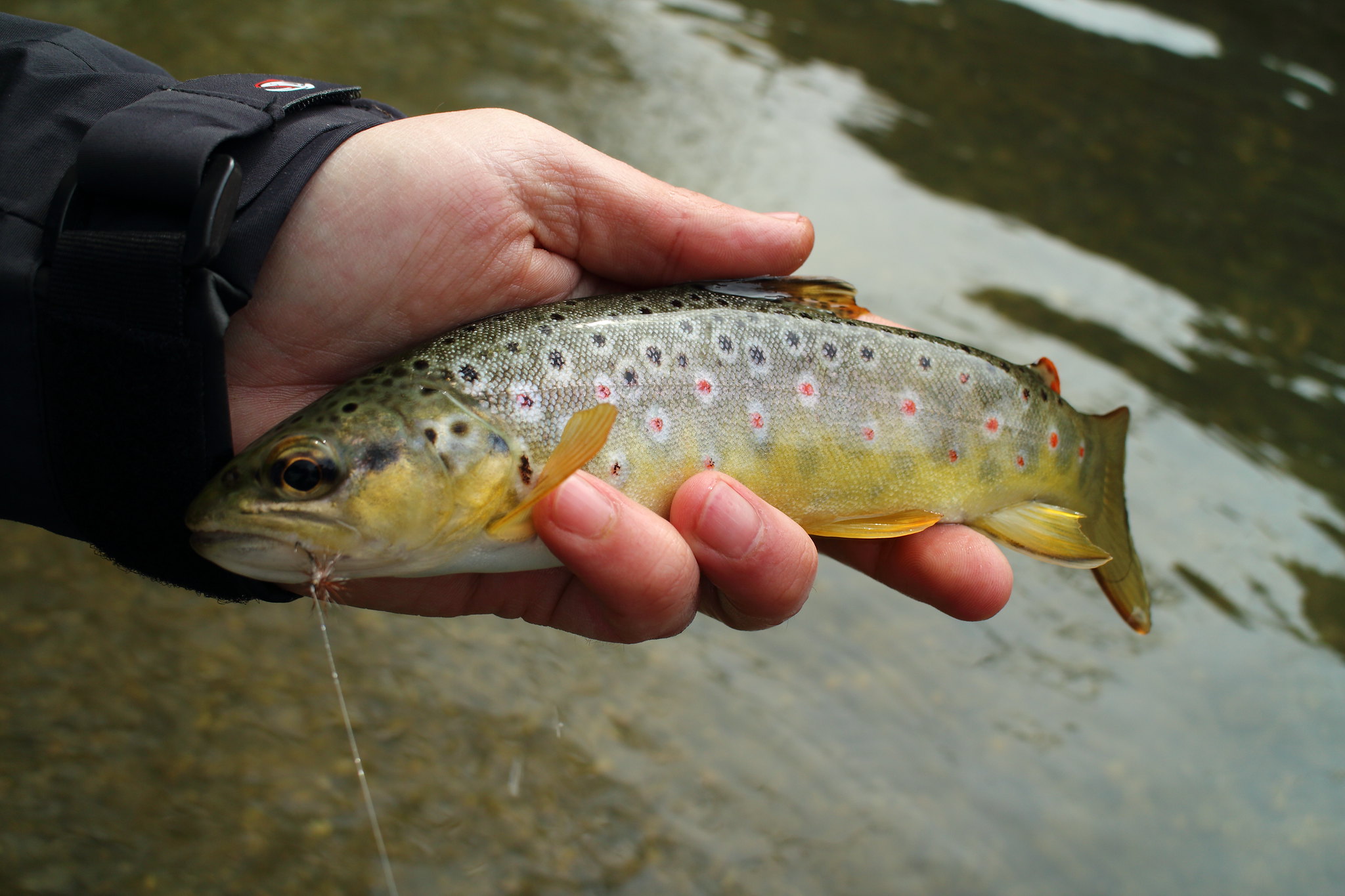 |
| First fish of the season, on a dry-fly too, you can't beat it |
Around the corner and in the shallow tail of the next pool Steve spotted a fish on the bottom, he queried if it was an eel, I crept up for a closer look, it wasn't an eel, my first thought was a brook lamprey. This was quite exciting as neither of us had ever seen one before and as far as I'm aware they're fairly uncommon although I had heard they have turned up in electro-fish surveys. We spent time watching them - a second one was spotted close by half tucked under a rock - Steve got some great footage on his GoPro and I took a few pictures. Satisfied but still feeling raged about the morning I settled on a fallen tree some distance away from the river and sat quietly watching Steve try his luck at some rising fish.
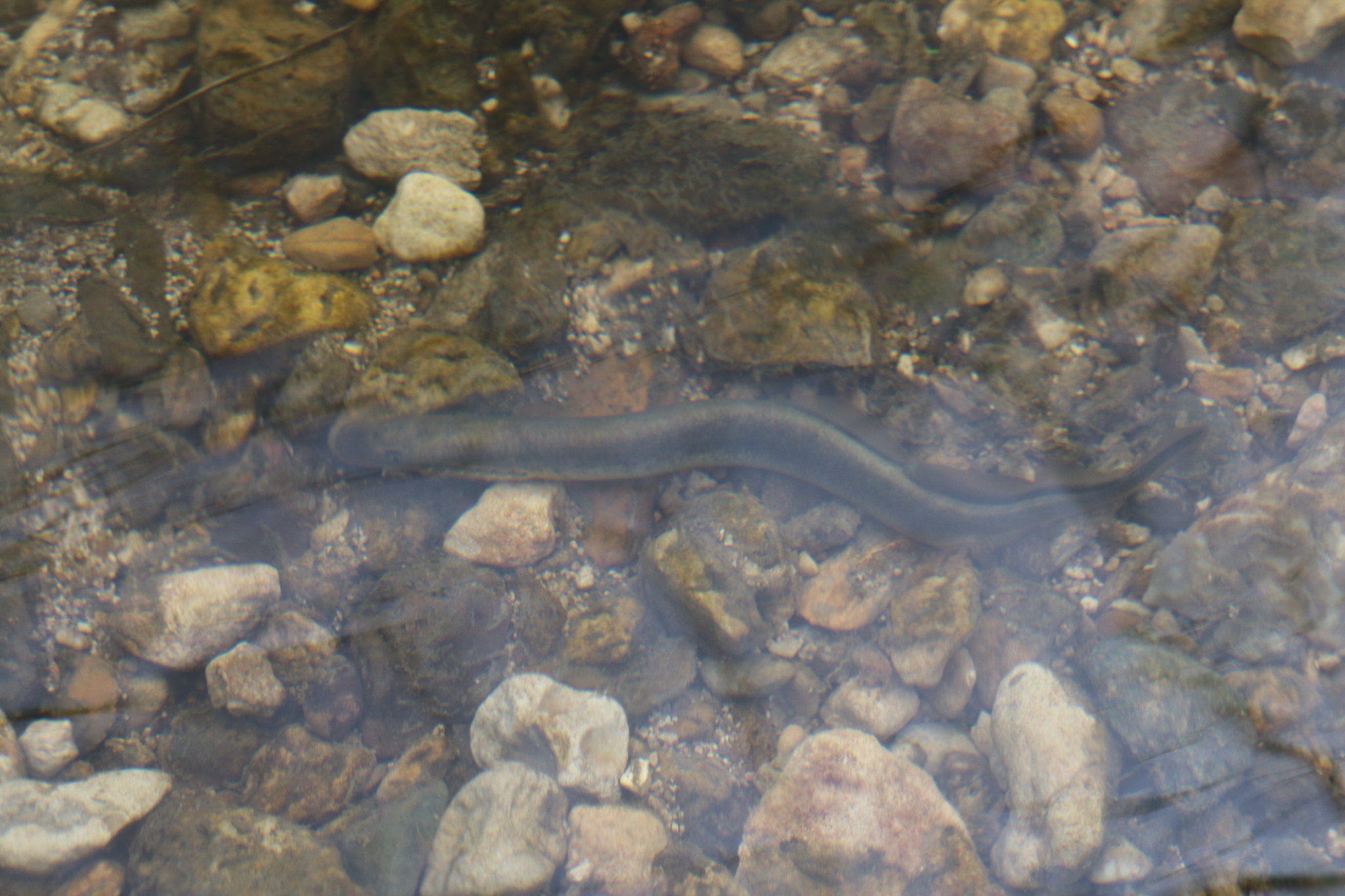 |
| Brook lamprey |
After a while I decided to leave Steve to it and headed back downstream. Slipping into the river just above the road bridge, a number of large dark olives were coming off and I saw a rise upstream. The wind blew stronger here due to the open nature, a poplar plantation that grew close to the bank had been felled during the winter leaving the area exposed. A size 14 Barbour paraloop dun makes a great match for the LDO especially the dark version, casting proved difficult and frustrating, there is nothing worse than seeing your fly blown below the end of the fly line. One more snagging and fly loss proved too much for me, I'm not afraid to admit, I lost my rag and stormed out of the river. It was only a few minutes after I returned to the car I could see the other three heading back. Tom and Eliot had more luck, Steve had still yet to catch and I told them that that was me done and that I was leaving, I really was pissed off. They did there best to get me to change my mind. Steve decided to carry on where I left off as Tom and Eliot headed downstream to the next beat. I milled around by the car, I was reluctant to give up despite my foul mood. In the end I decided to carry on and also headed downstream, I figured the other two had walked right down to the limit of the beat, I walked to around the halfway point starting where a cattle crossing spanned the river. My only reward for fishing a short section was a brief encounter lasting a second, before a small trout decided it wasn't my day.
Walking back to the car I really was in two minds, I wanted to go home, but I also felt I couldn't end the day like that, not opening day. With that my mind was made, a short ten minute journey took me to a the town the club river flows through. I knew where I wanted to fish and I was hoping it wouldn't let me down, a long run which really is a couple of pools with riffles connecting them has been good to me in the past, usually gifting me a few fish.
It is easy to fall into a complacent routine and I am guilty of that when it comes to fishing with a klink and dink, but its effectiveness can't be ignored and when prospecting it can be deadly. Of course this is how I fished the run ahead of me. I won't lie, I only tie one klink: the adams version, I don't need any others, a copper bead PTN hung below. Within five minutes I had caught a fish, I felt relaxed at last, at peace almost and I fished up with a steady purpose. By the time I reached the end my tally was on nine, this is what I had wanted from my opening day, I questioned why I hadn't just come and fished here from the beginning.
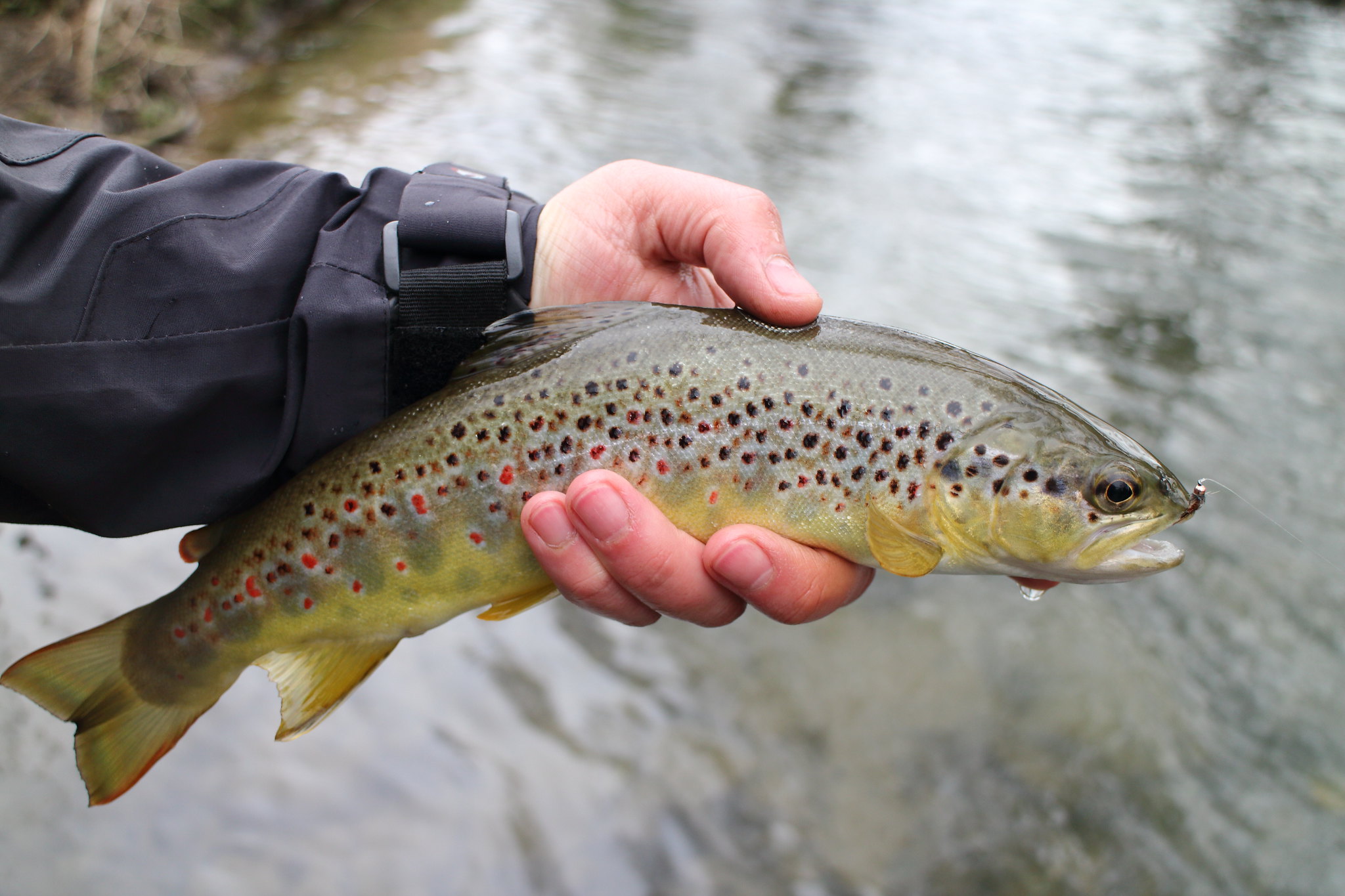 |
| Finally catching some fish |
 |
| Copper bead PTN, a very versatile nymph |
I was running short on time, the wife had been on at me about when I was going to get home, I delayed my departure as I wanted to have a few casts in the outfall pool. Because of the slower flows I changed the dink to a JP Pupa, a cream bodied version with a standard copper bead, I didn't want this fly to plummet through the depths. In quick succession I caught two trout, the third fish was what I was after. I knew it was big, not just because I saw it but also from the way it behaved. The power was smooth, the head shakes meaningful, they felt frightening and unlike most trout that thrash around in the air when they jump this fish just leaped like a salmon, no thrashing, no great height either, its size was significant. It was one of those moments where I wished I wasn't on my own, the fish lay in bottom of the Glen Pointon LTD floating net, genuinely I didn't know what to do with this fish, I couldn't get a proper hold of it to lift up for a picture and I was still awestruck at the size of the it. This is when I made a fatal error. The floating rim of the net allows you to lay your rod across it keeping it out the way and frees up both hands too. kneeling down I took hold of the trout with hands, lifted it up to hold against the rod to gauge the length. Eighteen to nineteen inches is the figure I got, then the inevitable happened. The trout thrashed out of my hold landing outside of the net, then it was gone. A scream left my mouth, then a single swear word was uttered, and uttered again, and again for around five minutes, I felt such a loss, I hadn't experienced that feeling for a long time and I felt pretty devastated. Understandably I ended the day there, still muttering that single swear word as I walked back to the car. I still cannot believe I failed to take one picture, I know I have the memory in my mind and I doubt anyone would question my integrity, but I do like to keep a record of substantial catches, better luck next time I guess.
